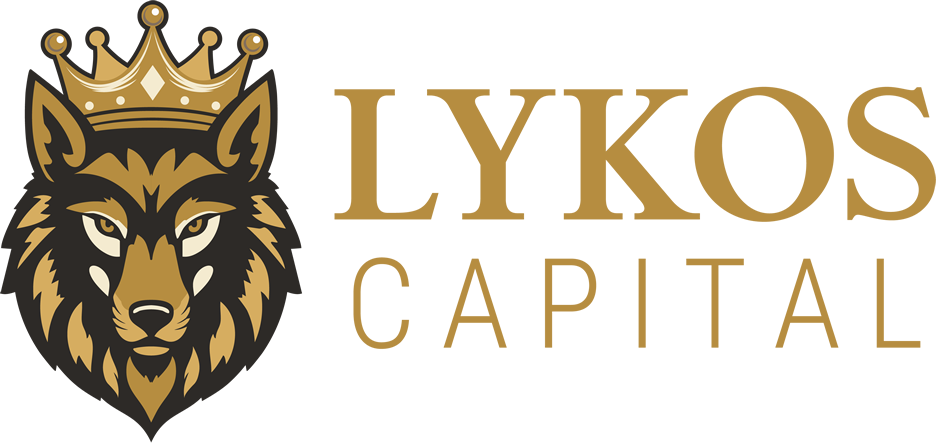Starting a new business is exciting, but it also comes with a unique set of challenges. One of the biggest hurdles many new entrepreneurs face is getting their name out into the market. The industry is crowded, with countless established companies and local brands already competing for attention. In this noise, standing out and reaching the right audience can feel overwhelming. That’s where creating a strong brand identity for your brand comes in.
A well-crafted identity can be the key to cutting through the noise. It not only helps make your business recognizable but also creates a foundation for long-term customer loyalty. With a compelling identity, your business can foster a strong culture, build a loyal customer base, and, most importantly, improve your overall brand recognition.
Why Is Developing a Strong Brand Identity Important?
When you launch a new business, you need more than just a logo or a catchy tagline. A strong brand encompasses much more than how your logo looks or how your product is packaged. It’s the entire experience you offer, from the way customers perceive you to how you communicate with them at every touchpoint.
An identity reflects who you are as a company, what you stand for, and how you want to be perceived. This is why it’s essential to approach branding holistically, considering everything from the colors on your website to the tone of voice in your social media posts. Building a cohesive identity allows you to carve out your space in the market. A strong brand helps you stand out in a way that is memorable and impactful. Over time, your identity will become synonymous with your company’s values, vision, and the experience you offer customers. It forms the emotional connection between your business and its customers, which can lead to higher levels of trust, loyalty, and, eventually, sales.
A customer who connects emotionally with your brand is more likely to return and recommend your business to others, making it an invaluable asset for long-term growth. Another crucial factor to consider is branding management. Effective branding management involves consistently ensuring that your brand message remains aligned with your company’s values and resonates with your audience. It’s a process of nurturing and growing your brand in the right direction.
When managed well, branding management allows you to build a reputation that customers feel confident in supporting. This can be the difference between a successful startup and one that struggles to find traction.
The Role of Brand Management in Building Recognition
Brand management goes far beyond aesthetics. While logos, colors, and packaging certainly contribute to brand recognition, the management of your brand involves overseeing how it’s perceived by customers across all platforms. This is about ensuring your branding is consistent and cohesive, aligning with your business’s core values at every customer touchpoint.
Managing your brand is essentially about managing its reputation. A strong identity and effective branding management enable you to differentiate your business from competitors, no matter how many similar products or services exist in the market. When customers can easily identify your brand and feel a connection with what it stands for, they are more likely to support it, make purchases, and promote it to others.
Moreover, having a strong brand allows you to target specific demographics that resonate with your brand’s personality. This enables you to build a community of customers who share your values and are more likely to engage with your brand both in the short and long term. A well-managed brand helps you maintain a consistent image, message, and culture that aligns with your business goals.
Brand Guidelines and Tips
Creating a strong identity for your brand requires planning, consistency, and dedication. To ensure your brand stands out and attracts the right audience, there are a number of steps you can take to refine your brand messaging, style, and presence.
1. Define Your Brand’s Personality, Vision, Values, and Goals
Before you can develop a strong identity, you must first have a clear understanding of what your brand stands for. This involves defining your brand’s personality—whether it’s professional, fun, adventurous, or approachable. You should also have a clear vision for your brand’s future, understanding where you want to take your business and what you aim to achieve.
In addition to the personality and vision, consider the values your brand holds dear. These values should resonate with your target market and guide your company’s decisions, messaging, and actions. Your brand’s goals should be aligned with these values and help steer your branding efforts in the right direction.
2. Boldly Present Your Brand Across Different Platforms
Consistency is key to building a recognizable brand. Once you’ve defined your brand’s personality and values, it’s time to communicate them clearly and consistently across all platforms. Whether you’re operating a website, a social media account, or a physical storefront, make sure your branding remains uniform across every channel.
From your website design to your social media posts and even the way your employees interact with customers, consistency in how your brand is presented is important. This helps customers form a stronger emotional connection with your business and reinforces your messaging.
3. Be Consistent With Your Visual Aesthetics and Communication Style
Consistency in both visual aesthetics and communication is critical to creating a strong identity. This means using the same fonts, colors, and design elements across all your platforms. A consistent visual identity makes it easier for customers to recognize your brand and helps build trust over time.
Your communication style should also reflect your brand’s personality. Whether you’re using formal language or a casual tone, make sure that your messaging stays consistent across all communication channels. This includes emails, social media posts, customer support, and advertising campaigns. Using the same taglines, catchphrases, and messaging will help reinforce your brand.
4. Advocate for Your Brand’s Values
A brand is a reflection of your company’s values. To build a strong identity, you must be an advocate for the values that your brand represents. Your brand’s values should be at the core of everything you do.
Make sure your values are reflected in your actions. For example, if your brand values environmental sustainability, make sure your products are eco-friendly and your business practices align with this value. Sharing your values with your customers and showing them how you uphold these principles builds credibility and trust.
5. Do On-Ground Promotions and Events
Building brand recognition goes beyond the digital world. Don’t underestimate the power of on-the-ground promotions and events. Hosting or participating in local events, pop-up shops, or charity fundraisers can help you connect with your community and raise awareness of your brand.
These in-person interactions help humanize your brand and build stronger relationships with your target audience. People are more likely to remember and engage with a brand they’ve had a direct experience with, whether through a product demo, a live event, or a conversation with an employee.
6. Share Your Culture With Your Community
A strong brand is built not only on external perceptions but also on internal culture. Customers often connect with businesses that share their values and demonstrate a sense of authenticity. This is why sharing your brand’s culture with your community is important.
Let your customers know what your brand stands for beyond just products or services. People want to connect with companies that have a personality and are invested in their community. Use social media, blog posts, or videos to give your audience an inside look into your company’s culture, the people behind your brand, and what makes you unique.
7. Partner With Established Businesses That Share the Same Values
One effective way to improve brand recognition is by collaborating with established businesses that share your values and target audience. These partnerships allow you to reach new customers, gain credibility, and build trust by association.
Look for businesses with a similar customer base that complements your offerings. Cross-promotions, co-branded events, and joint marketing campaigns can all help increase your visibility and establish your brand as a trusted player in your industry.
Final Thoughts
A strong brand identity is a powerful tool for any business, especially startups looking to make a name for themselves in a crowded market. By defining your brand’s personality, values, and vision and ensuring consistency across all platforms and communication channels, you can establish a presence that resonates with your target audience.
Effective branding management is key to maintaining that identity and fostering long-term customer loyalty. With the right strategy in place, your brand will not only be easily recognized but will also attract a community of loyal customers who believe in what you stand for. By following these branding guidelines and tips, you’ll be well on your way to creating a memorable brand that leaves a lasting impression.
LYKOS Capital is a leading marketing and business development firm in California, offering business comprehensive customer engagement solutions. We offer branding management, customer acquisition, and other advertising services to our discerning clients. Contact us today to learn more about how we can help your business grow.

